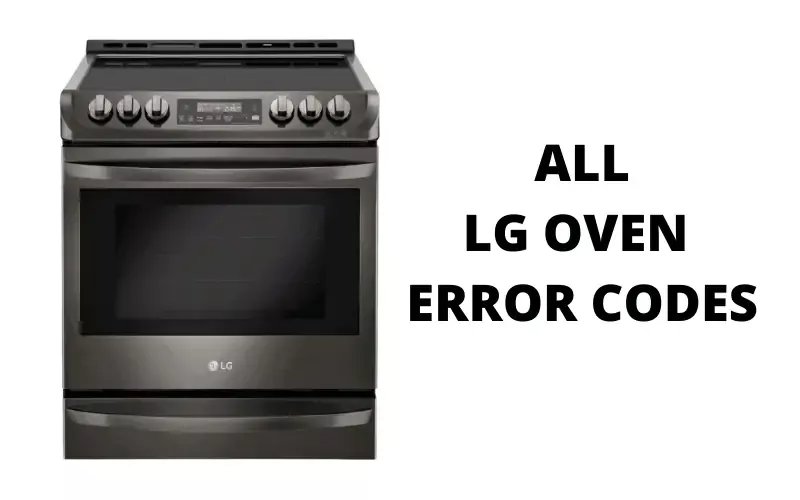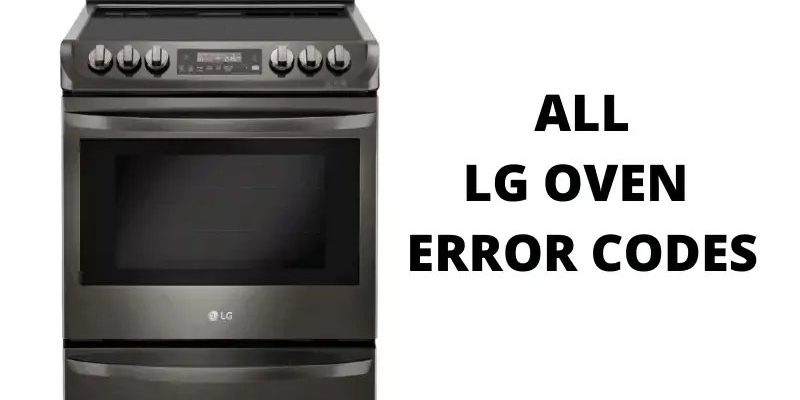
Just like a car’s dashboard lights up when something needs attention, your LG oven or range uses error codes to communicate issues. This code acts as a signal that something isn’t quite right. The “LE” error is a specific message related to the oven’s ability to communicate with its components. Essentially, the LE code is indicating a potential problem with the oven’s motor or its wiring system. Think of it like this: if your oven were a computer, this would be like seeing a notification that the connection to the printer is faulty.
Understanding the LE Error Code
You might be wondering, “Why does this error occur in the first place?” Well, the LE error code typically suggests a problem with the oven’s fan motor or its communication with the control board. Imagine trying to have a conversation with a friend over the phone, but the line keeps cutting out. Frustrating, right? That’s what your oven is experiencing when it flashes an LE code—there’s a disrupted “conversation” between components.
The fan motor is crucial because it helps circulate air for even cooking and proper temperature distribution. When this doesn’t happen effectively, the oven might not heat evenly or could stop working altogether. In some cases, the wiring that connects the motor to the control board might have incurred damage or experienced wear and tear over time, leading to communication issues.
You should also consider how frequently you use your oven and the age of the appliance itself. Older models or those that get a workout every day might encounter this error more often due to parts wearing out. As with any electronic appliance, regular maintenance can mitigate these problems. Checking connections and tightening any loose wires are good first steps.
Diagnosing and Fixing the LE Error Code
Here’s the deal: Diagnosing the LE error code might seem daunting, but you can do some basic troubleshooting at home. First, ensure your oven is turned off and unplugged for safety. Then, check the wiring connections on the back of the oven. Sometimes, simply disconnecting and reconnecting the wires can resolve minor glitches. It’s akin to rebooting your computer when it starts acting up.
If reconnecting the wires doesn’t work, the fan motor itself might be the culprit. Listen for unusual noises or lack of the usual hum when the oven is running—these could be telltale signs the motor needs replacing. Picture it like your car’s engine struggling to start. If this troubleshooting doesn’t fix the issue, it might be time to call in a professional.
Understandably, the idea of taking apart your oven may seem off-putting, especially if you’re not a DIY enthusiast. Suppose you’d rather not risk it. In that case, contacting a certified LG technician is a wise step. They’ll have the right tools and expertise to handle the problem safely and efficiently.
Preventive Tips and Maintenance
You might ask, “How can I prevent this from happening again?” Great question! Regular maintenance is key. Think of your oven like a car—regular oil changes and check-ups keep it running smoothly. Similarly, routinely checking your oven can prevent many issues before they start. Make sure the area behind your oven is clean and free of debris, as dust and dirt can affect the motor’s performance.
Also, don’t overlook the importance of correct installation. During initial setup, ensuring that all connections are secure and tight can save you hassle later. Just like making sure your shelf is level to prevent books from slipping off, proper setup of your oven components helps keep everything in working order.
Lastly, always consult your oven’s user manual for specific cleaning and maintenance guidelines. By following manufacturer recommendations, you’re less likely to encounter problems like the LE error. And remember, if you’re ever unsure, reaching out to LG support or a professional technician is never a bad idea.
What to Do Next
So, here’s what you do next: Try the simple fixes first, like checking and reconnecting wires. If the issue persists, listen to your oven—both for sounds and error codes—and don’t hesitate to call in a professional if needed. By addressing the LE error promptly, you’ll ensure your oven gets back to performing its best, cooking your meals perfectly every time.
And there you have it! With these insights and steps, you’re now equipped to tackle the LE error code should it light up your oven’s display. Remember, staying informed and proactive makes all the difference when it comes to maintaining the trusty appliances that make our lives simpler, day in and day out.
